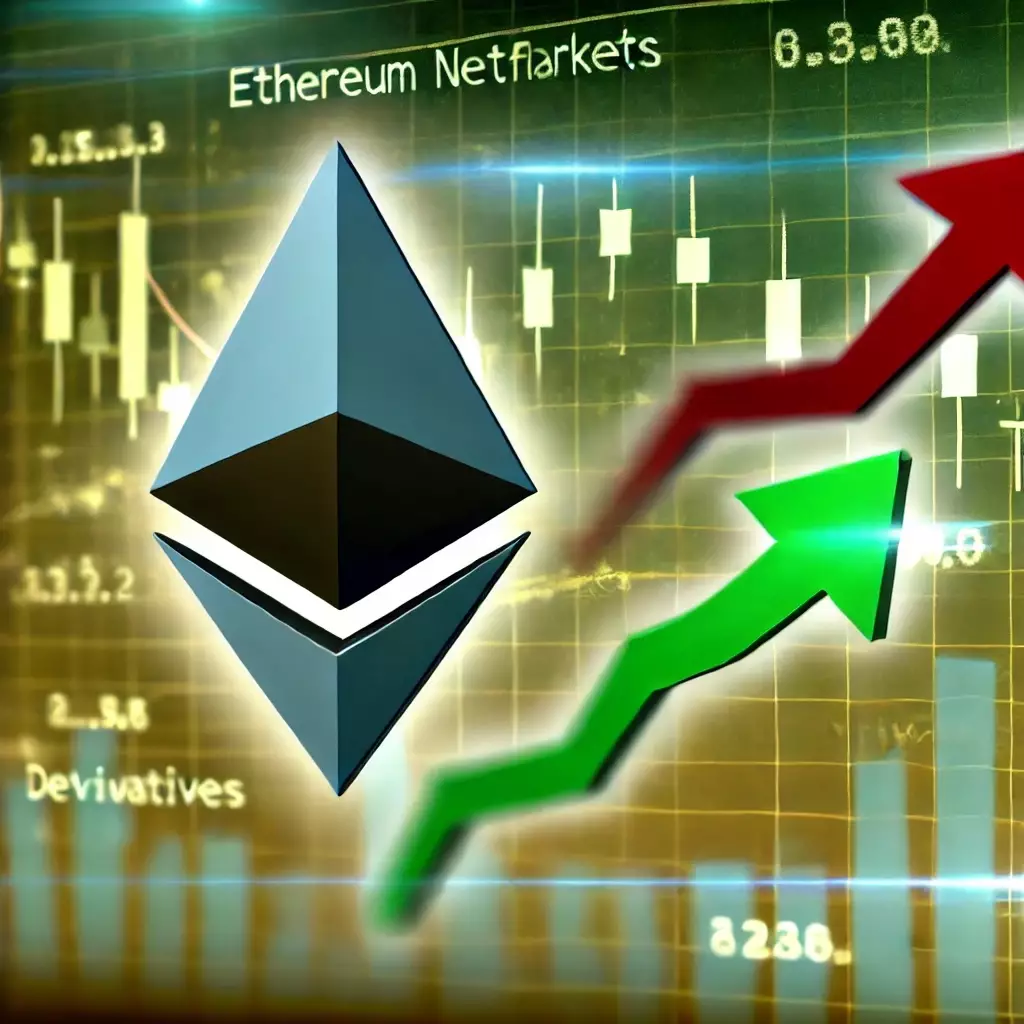In the ever-evolving world of cryptocurrency, Ethereum (ETH) has found itself in a phase marked by moderate price fluctuations and persistent challenges. Despite experiencing a brief rally in August that brought it tantalizingly close to the $3,000 threshold, the asset has since struggled to maintain momentum. This report aims to dissect the underlying factors contributing to Ethereum’s current state and explore the implications of recent market activities.
Ethereum’s recent trajectory can best be described as stagnant. In the past few weeks, the cryptocurrency has recorded lackluster performance characterized by minor price surges but a general inability to sustain these gains. As of now, ETH has lingered below the critical $3,000 mark, signaling that investor sentiment may not be as bullish as one might hope. This stagnation in price raises questions about what forces are at play behind the scenes, affecting how traders react to market cues.
Recent analyses have pointed toward an intriguing shift in Ethereum’s netflow, a term that refers to the movement of ETH into and out of exchanges. According to CryptoQuant analyst Amr Taha, this shift indicates a potential brewing change in the market’s landscape. The notable increase in netflows, highlighted by an influx of approximately 96,000 ETH directed toward derivative exchanges, suggests that traders may be preparing for significant price movements. Historically, such movements toward derivatives have often signaled heightened volatility or a market correction.
The implications of Ethereum’s changing netflow cannot be understated. Taha’s analysis indicates that the recent spike could be indicative of a forthcoming period of market activity. When large amounts of cryptocurrency are funneled into derivative markets, it often serves as a precursor to increased trading dynamics—whether that results in a price correction or a sudden surge remains to be seen.
In parallel, Taha examined Bitcoin’s Futures Sentiment Index, a metric that captures traders’ overall sentiments. His observations highlighted notable peaks in the sentiment index that correlate with local market tops. This correlation suggests a recurring pattern wherein investor optimism, once maximized, often precedes a downturn. In cryptocurrency markets, where volatility reigns supreme, such inversely proportional relationships can serve as vital indicators.
Despite the underwhelming price performance, Ethereum has demonstrated resilience in its daily trading volume, which has hovered in the range of $15 billion to $19 billion over the past week. This consistent volume without extreme fluctuations implies that, while price corrections and minor surges may occur, the overall trading ecosystem remains robust. As traders navigate the intricate dynamics of Ethereum and Bitcoin, the near future appears fraught with potential for both opportunities and pitfalls.
As of the latest writings, Ethereum is contending with the impact of a recent 3.1% correction, but it exhibited a glimmer of positivity with an increase of 0.9% in a single day, climbing to approximately $2,559 before stabilizing around $2,541. These fluctuations reflect the delicate balance ETH maintains amid growing speculation and shifting market signals.
Given the current indicators, investors may want to brace for potential volatility in the coming weeks. The dual context of shifting netflows in Ethereum and varying trader sentiment in Bitcoin creates a complex matrix for market prediction. Heavy movements into derivatives could either bolster the asset’s recovery or catalyze further declines, depending on broader market conditions.
As Ethereum’s price hovers below the $3,000 barrier, traders must remain vigilant and adaptive. Analyzing netflows and sentiment as components of a broader strategy could provide invaluable insights for navigating the increasingly intricate cryptocurrency market. In this environment of uncertainty, continuous observation and strategic positioning will be essential for both long-term holders and short-term traders alike.

